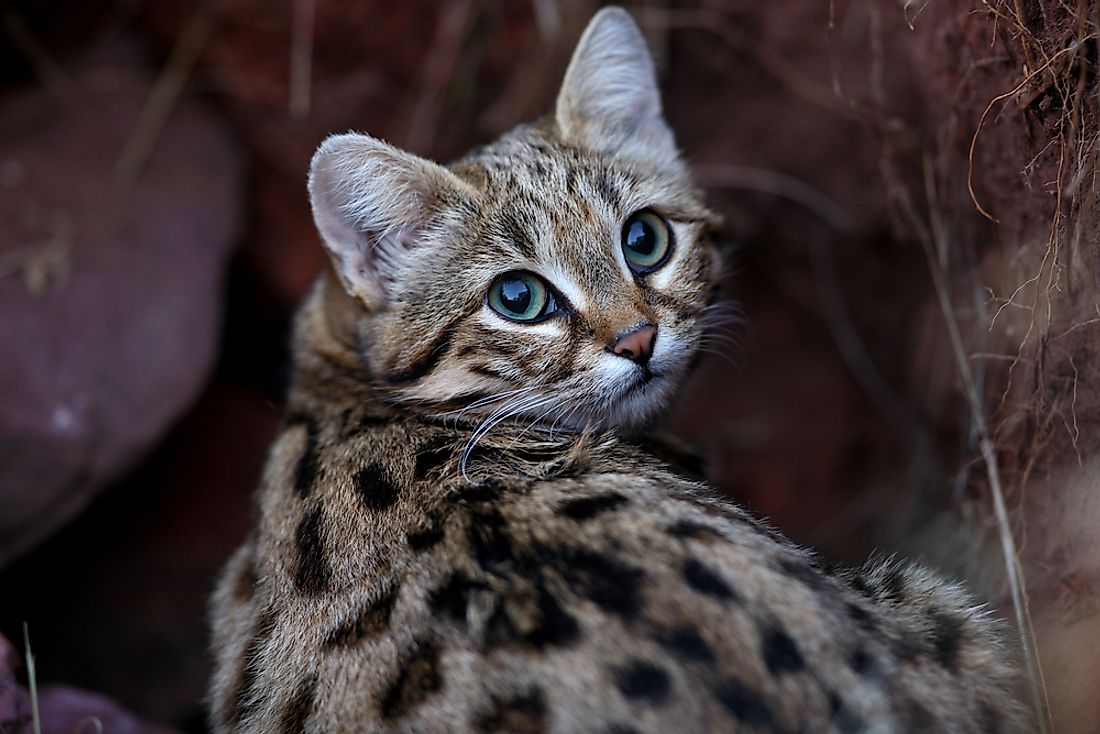Black-Footed Cat Facts: Animals of Africa

5. Physical Description
At first glance, it would be easy to mistake the black-footed cat for any other feral cat. Upon closer inspection, however, it is more distnguishuable, as it is actually one of the world’s smallest wild cats. These cats can grow up to 20 inches (51 centimeters) in length, with their accounting for nearly half of that length at 8 inches (20 cm). They only weigh up to 5.5 lbs (2.5 kg) with females being slightly smaller than males on average. Their coats are yellowish-brown with brown or black spots that elongate into rings around the cats’ arms and legs to help with their camouflage. The black-foot cat was named after the color of the soles of its feet.
4. Diet
The black-footed cat is a carnivore, and as such, its diet is purely made up of meat. They will eat a variety of small animals such as rodents, insects, amphibians, and birds. Majority of their food weigh less than 40 g, but the cat will hunt larger prey when their usual menu is scarce, such as hares and bustards, but this mostly occurs in the winter time. When they hunt larger animals, black-footed cats may store leftovers in caches for later times. Hunting up to 3,000 rodents annually, the black-footed cat is an excellent form of pest control in their occupied area.
3. Habitat and Range
Found in arid terrain of southern Africa, the black-footed cat can only be found in three countries: Botswana, Namibia, and South Africa. Mostly, they are found in short to medium grass plains or scrub deserts where rodent and bird populations are high. Their stringent habitat needs make them difficult to accommodate in captivity. Listed as Vulnerable under the IUCN Red List, there has only been one major field study on this species and their population has been decreasing and is largely scattered and fragmented. Major threats to the black-footed cat are habitat degradation by encroaching livestock and agriculture, as well as unregulated use of poison and pesticides as a form of indiscriminate pest control.
2. Behavior
Black-footed cats are solitary creatures save females with young. They are known by locals to be stubborn and feisty creatures, capable of fending off jackals when cornered. As a nocturnal species, the cats will spend their day hiding from the heat in the burrows of other animals, mostly springhare burrows and the occasional abandoned termite mound. The cats are semi-territorial and will mark their territory with their scent; territories may overlap, but the cats will avoid each other outside of mating season. Due to their size, camouflage, and the lack of direct contact with humans or their livestock, the black-footed cat is one of the least known felines in the world.
1. Reproduction
Mating season begins in August and September. A female will increase her urine spraying frequency to announce her receptiveness to mating. The male will call to the female and they will only spend 5 to 10 hours together in order to mate, and then each will return to their own territory in solitude. A female’s gestation period lasts approximately two months and they will give birth in November to December. Black-footed cats will, on average, give birth to two litters annually with 1 to 3 kittens each time. These kittens will leave the den at 3 weeks old and start hunting at 6 weeks, but they will not fully mature until they are approximately 15 months old.











